Like so much of Scotland missing from the ‘things to see in Scotland before you die’ lists, the region of Angus between the cities of Aberdeen and Dundee is one of Scotland’s hidden gems. With glacial glens, beautiful beaches and as much fresh fish as you can eat, here is how to visit Angus.
The 10 best things to do in Angus
- Hike the Angus Glens – five dramatic glacial glens that stretch down out of the Cairngorms National Park offering fabulous walking and Munro Bagging.
- Drive the Angus Coastal Route – from Montifeith to Carnoustie, to Arbroath and Montrose, the the Angus Coastal Route (the A92) is one of Scotland’s most scenic roads.
- Visit the House of Dun – an 18th-century laird’s home, the House of Dun has stunning interiors and lovely formal gardens.
- Try an Arbroath Smokie and a Forfar Bridie – two of Angus’s most famous delicacies.
- Walk the Arbroath Smokie Trail – and visit the Arbroath Signal Tower Museaum to learn about the Bell’s Rock Lighthouse, one of the seven industrial wonders of the world.
- Go bird watching at Montrose Basin – an enclosed estuary home to over 80,000 migratory birds
- Head to the beach Lunan Bay – regularly appearing on the list of Scotland’s best beaches Lunan Bay is an absolute beauty.
- Explore Glamis Castle – dating back 600 years to the 14th Century, Glamis was the childhood home of the Queen Mother, it is also the birthplace of Princess Margaret.
- Stroll along the Edzell Blue Door Walk - following the river at Edzell up the Highland Boundary Fault through a blue door into the grounds of Burn House up to the Rocks of Solitude.
- Visit Arbroath Abbey – site of the signing of the Declaration of Arbroath.
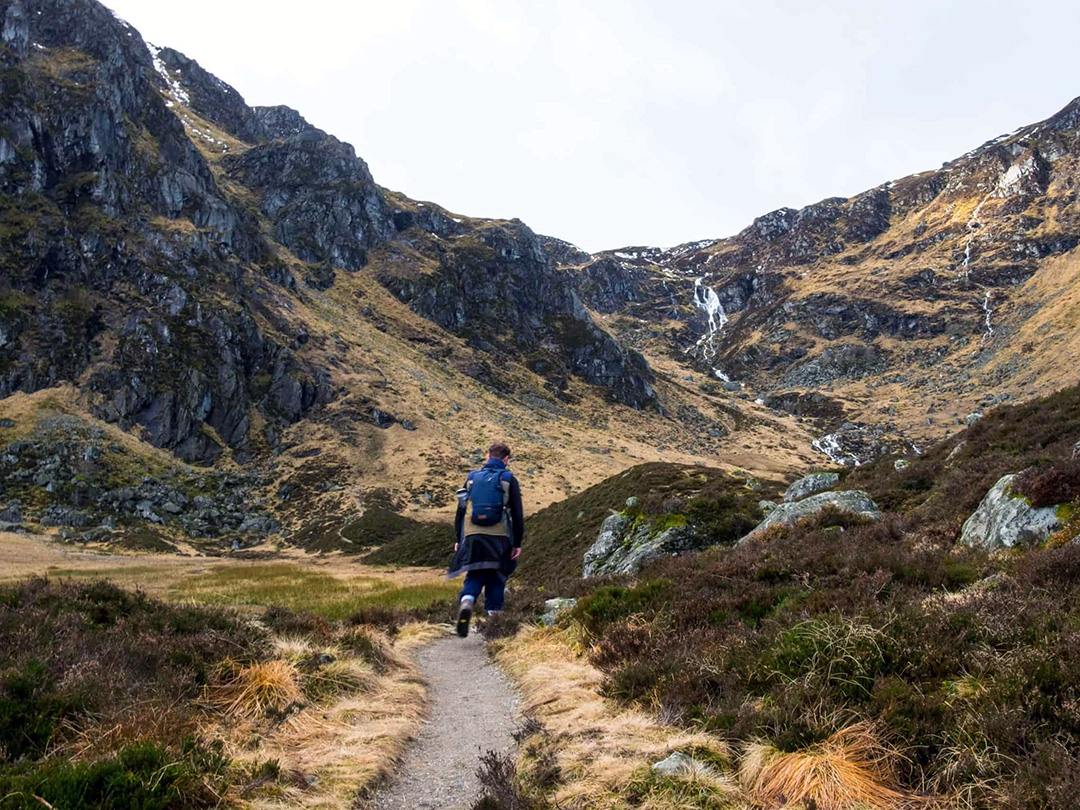
The need to know before you go to Angus
- Angus is located in the Lowlands of Scotland, but the region stretches from the coast up to the Cairngorms, with the region split by the Highland Boundary Fault – the highest part of the region reaches 1068 m at the top of Glas Moll.
- The Angus Glens are five dramatic glacial glens that stretch down out of the national park – Glen Islan, Glen Prosen, Glen Clova, Glen Lehnot and Glen Esk. One of the best examples of Angus’s glacial landscape can be seen at Corrie Fee.
- Down on the coast, Angus sits between Dundee and Aberdeen and includes the coastal towns of Carnoustie, Arbroath, and Montrose. Other towns in the hinterland between the sea and the glens nclude Forfar, Brechin, Kirriemuir and Edzell.
- Angus is one of the most historically significant areas of Scotland and is often called Scotland’s birthplace – the signing of the Declaration of Arbroath took place in Arbroath Abbey in 1320 – a letter asserting Scotland’s independence to Pope John XXII.
- The history of Angus goes back much further than Scotland’s first independence claim, the region is named after a Pictish king – Mormear of Angus – who was the earl of one of the seven Pictish kingdoms that ruled Scotland in the early 10th century. There are numerous Pictish hill forts and Pictish stones located throughout Angus – with the best to be found at Aberlemno, St Vigeans, Kirriemuir, and Montifieth.
- Angus’s neighbour, the City of Dundee, is famous for Jam, Jute and Journalism and farms across Angus supply fruit for the city’s jam and marmalade making factories – Mackays and Keillers. Aberdeen Angus beef also hails from Angus, alongside the Forfar Bridie and the Arbroath Smokie.
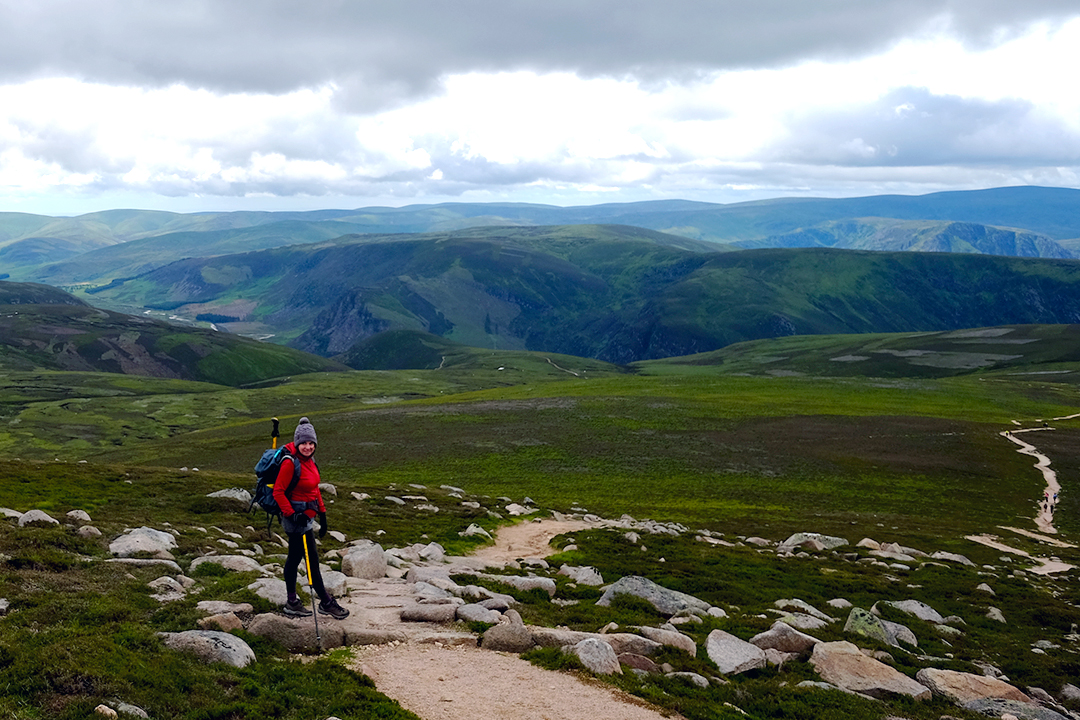
Where to stay in Angus
- In Forfar – stay at the self-catering Gardeners Cottage, or the lovely North Lodge, or go camping at Greenhillock.
- In the Angus Glens – stay at Tin Cabin, or at Glen Clova Hotel & Luxury Lodges or Glen Clova Lodges.
- In Kirriemuir – stay at The Bothy, or the Airlie Arms Hotel, at the self catering Thrums Cottage.
- In Edzell – stay at the Glenesk Hotel or The Panmure Arms Hotel.
- In Brechin, try Gramarcy House.
- In Glamis – book into the Drumshademuir Caravan & Camping Park
Things to do in Angus Map
Discover the Angus Glens
The Angus Glens are five dramatic glacial glens that stretch down out of the Cairngorms National Park – Glen Islan, Glen Prosen, Glen Clova, Glen Lehnot and Glen Esk. The five glens offer fabulous walking and Munro Bagging with the highest part of the region reaching 1068 m at the top of Glas Moll, with one of the best examples of Angus’s glacial landscape can be seen at Corrie Fee.
Here are more of my favourite walks in the Angus Glens:
- Walk up Glen Esk past the Queen’s Well Monument before climbing Mount Keen, the most easterly munro in Scotland.
- Discover Reekie Linn Waterfall after a walk through lovely woodlands in Glen Isla.
- Discover the glacial bowl and national nature reserve at Corrie Fee before climbing up to the Cairngorm plateau and tackling munros Mayar and Driesh.
- Visit Loch Lee and waterfalls with a 10 mile circuit of Glen Esk to visit the Falls of Unich and the Falls of Damff.
Nearby in the village of Kirriemuir visit the Gateway to the Glens which tells the story of Kirriemuir and the Angus Glens. For kids Kirriemuir also has the unique Peter Pan themed Neverland Playpark and the Star Rock Shop – and even a statue of former AC/DC bass player Mark Evans!
Explore through the blue door at Edzell
The Blue Door Walk at Edzell is one of my favourite we walks in Scotland. Otherwise known at the Rocks of Solitude river circuit, the walk starts beside the Shakin Brig, a suspension bridge which cross over the River Edzel, before following the river up the Highland Boundary Fault. The walk then heads through a blue door into the grounds of Burn House up to the Rocks of Solitute. The return is on the north side of the river.
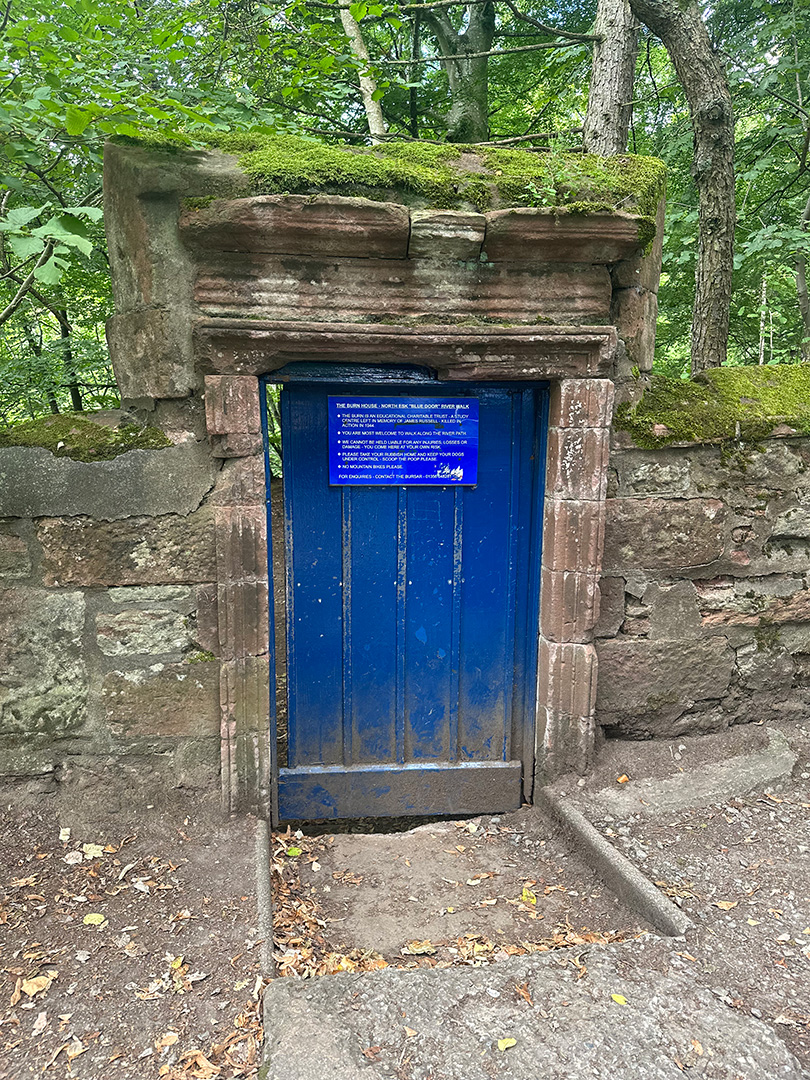
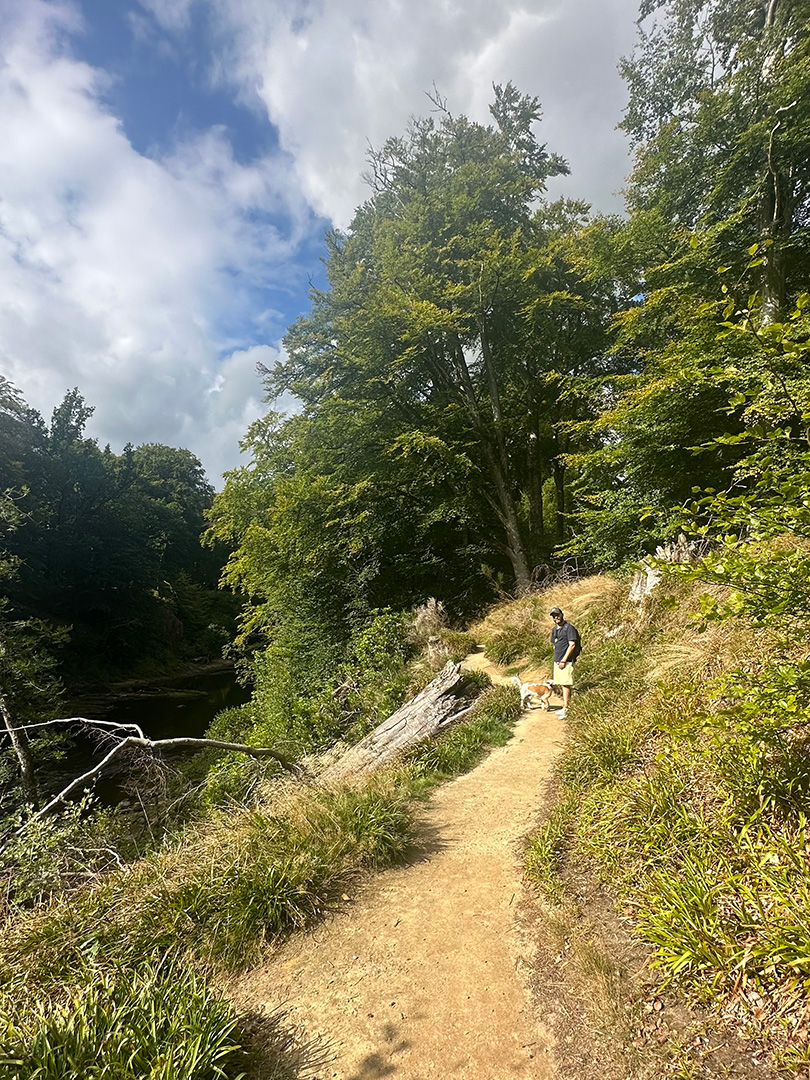
Drive the Angus Coastal Route
From Montifeith to Carnoustie, to Arbroath and Montrose, the the Angus Coastal Route (the A92) is one of Scotland’s most scenic roads. You can road trip the whole route 58 miles in a day, taking in castles, seaside towns and ports, and beautiful beaches. On the way…
Things to do in Montrose
- House of Dun – William Adam’s Georgian house on the edge of Montrose is one of the most spectacular houses in Scotland. An 18th-century laird’s home, the House of Dun has stunning interiors and lovely formal gardens. Managed by the National Trust, guided tours are available of the house. Admission is free for NTS members or £16 for adults.
- Montrose Air Station Heritage Centre – established in 1913, Montrose Air Station was the first operational military air station in Great Britain. An airport used as a military base by a military force for the operation of military aircraft, the heritage centre has lots of military planes and exhibits to visit. Admission is £8.80 for adults, children under 16 are free.
- Montrose Basin – The whole Angus coastline is a haven for bird life but Montrose Basin, an enclosed estuary home to over 80,000 migratory birds is a mecca for bird watchers. Managed by the Scottish Wildlife Trust there is a visitor centre, walks around the reserve and viewing huts. Admission to the reserve is £4 for adults, children free.
- Lunan Bay – On arriving at Lunan Bay, you can understand why it appears on the list of Scotland’s best beaches for it is an absolute beauty. Plus you can have it all to yourself, as the huge sweep of sand has been left relatively untouched – there is plenty of room for everyone. Lunan Bay Diner provides a campsite, cafe and farm shop.
- The Red castle of Lunan – Built by King William the Lion to help repel invading Vikings from Lunan Bay, the castle probably most likely used as the King’s luxury hunting lodge. Named after the red sandstone from which it is made, the castle has been many changes of hands since it was built, enduring a siege in 1579 when it was also set on fire and attacked by Lord Gray, Sheriff of Angus. Gray was later evicted from the castle by James VI with the help of local dundonians and a few siege engines.
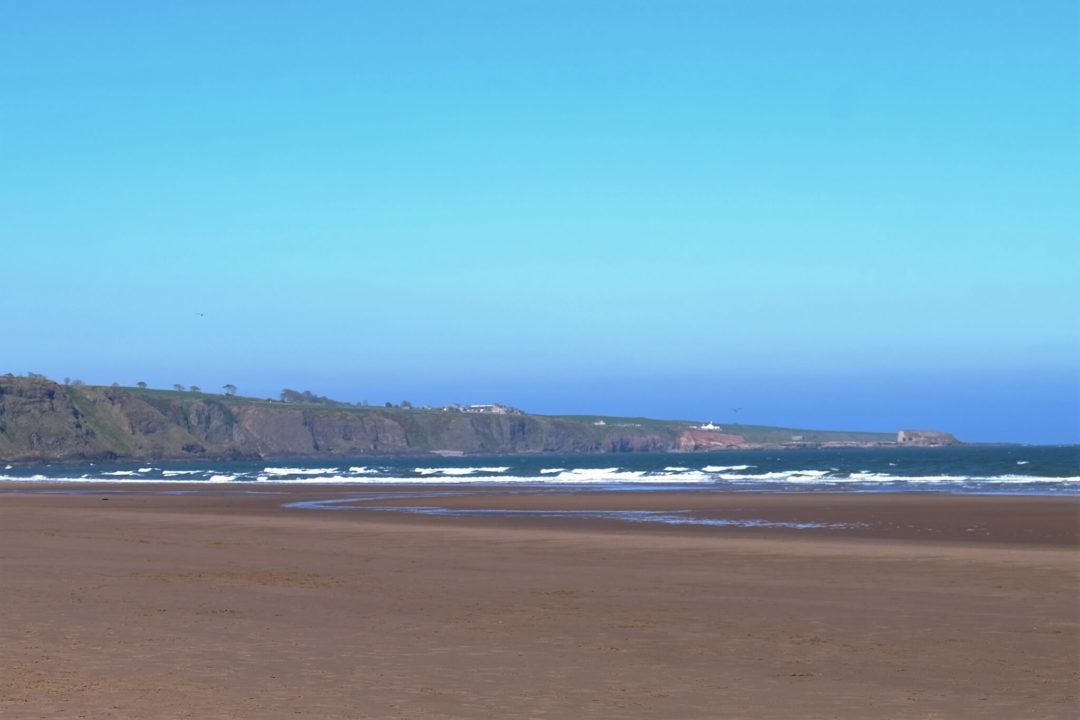
Arbroath
Arbroath with its smokie sellers and beutiful harbour is a great place to stop for lunch on your drive along the Angus Coast. Here are the best things to do in Arbroath.
Arbroath Abbey
Built in 1178 and founded by William the Lion (who also built the red castle at Lunan Bay) Arbroath Abbey was home to Tironensian Monks (also of Kelso Abbey in the Scottish Borders) and was set up in memorial to the murdered Archbishop of Canterbury, Thomas Bishop. King William I is also buried in the Abbey, the first monarch not to be buried in Dunfermline Abbey. The Abbey is now managed by Historic Environment Scotland.
The Abbey was the site of the signing of the Declaration of Arbroath, a letter from Scottish nobel men to Pope John XXII in response to the excommunication of Robert the Bruce in 1306 for the murder of John Comyn. The letter set out Scotland’s case for independence and included the famous line “it is in truth not for glory, but for freedom – for that alone, which no honest man gives up with life itself.”
Try an Arbroath Smokie
A ‘smokie’ is a delicacy of the harbour town of Arbroath. Haddock is dried in salt and then smoked over oak and beech chips for about an hour, often over whisky barrels. There are now around 15 small family smokie producers in Arbroath, firmly keeping the local fishing industry alive.
Hike the Arbroath Smokie Trail
The Arbroath Smokie Trail takes you from Arbroath to Auchithie along a coastal path. Visit the Arbroath Signal Tower Museaum to learn about the Bell’s Rock Lighthouse (one of the seven industrial wonders of the world) and the Signal Tower, before exploring the pretty Arbroath harbour peeking into all the smokies you can find. The Fit o’the Toon is the oldest part of Arbroath where the fisher families used to live.
Leaving Arbroath behind, follow the cliff top path looking out for sandstone formations before reaching the sands of Carlingheugh Bay. Reaching Aichithie which is perched on the cliffs and its small harbour below look out for puffins nesting on the rocks.
Visit Carnoustie
- Visit Ardestie Earth House – Whilst called a house, Ardestie is actually a souterrain or a stone-lined underground passage which dates from the first two centuries AD and was associated with the remains of huts and stores which can be seen on the surface. Most likely used for storage, most souterrains were systematically filled in or destroyed in the 3rd century (no one is quite sure why) so it is rare to find one as complete as Ardestie Earth House.
- Discover Barry Mill – a complete working watermill, Barry Mill is one of the only remaining examples in Scotland.
- Head for a round of golf at Carnoustie Golf Links
- Visit East Haven, one of the earliest recorded fishing communities in Scotland.
- Go for a stroll on the sand at Carnoustie Beach
Things to do in Forfar
The Angus town of Forfar is famous for its bridies…
Try a Forfar Bridie
A Scottish shortcrust pastry made with minced beef, bridies are said to have been invented by a baker in the Angus town of Forfar in the 1850s. The name either comes from the fact they were often served at weddings, or after a Margaret Bridie of Glamis who sold bridies at the Buttermarket in Forfar. Whoever invented them, it is worth a pilgrimage to Forfar to buy a bridie from one of the many popular bakeries.
Get out on foot for wildlife watching
Visit Forfar Loch Country Park a country park near Forfar, the loch can be strolled around on a 2.5 m circular route. Nearby Murton Farm, Tea Room and Nature Reserve is just outside Forfar and has a network of paths for birdwatching in a variety of lochs and wetlands. The farm offers animal handling and the tea room offers coffee and lunches.
Things to do in Brechin
- Brechin Cathedral and Round Tower – dating back to the 13th century, Brechin Cathedral is a beautiful A listed church and round tower in Brechin. Despite its name, the church was never actually a cathedral (it never had a bishop etc) and the building closed as a church in 2021. There are now plans to restore the building for community use. Next to the cathedral is the round tower which dates back to 1000 AD and is 86ft high and topped with a spire – Brechin’s Round Tower is one of the best examples in Scotland.
- Ride the Caledonian Railway – the Caledonian Railway is a 4 a mile heritage rail line which runs between Brechin and the Bridge of Dun. Catch a heritage diesel or steam train along the line – why not try some of the local Gin Bothy gin on the train, or go for lunch at the station in Brechin.
Things to do in Glamis
Glamis Castle
Home to the Earl of Strathmore and Kinghorne, Glamis Castle dates back 600 years to the 14th Century. The childhood home of the Queen Mother, it is also the birthplace of Princess Margaret. The castle sits in 14000 acres of parks and gardens and a stunning arboretum featuring trees from all over the world.
The castle is home to plenty of legends, including the ‘Monster of Glamis’ – legend has it that a vampire is born to every generation of the family who lives at Glamis and is kept in the castle all their lives, trapped in a bricked up room…
The Earl of Glamis who insisted on playing cards on a Sunday and with no one agreeing to playing with him became so furious that he claimed he would play until the devil himself joined him. On sitting down, he was joined by a stranger who had just arrived at the castle, who took his soul, condemning him to pay cards until doomsday arrived.
Don’t mess with the devil in Angus!
Love from Scotland x
